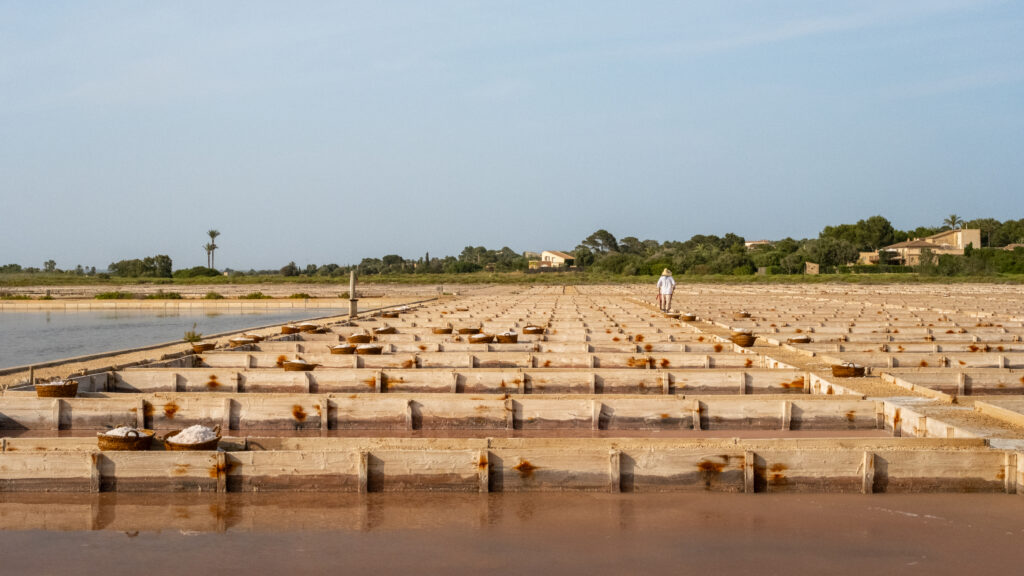
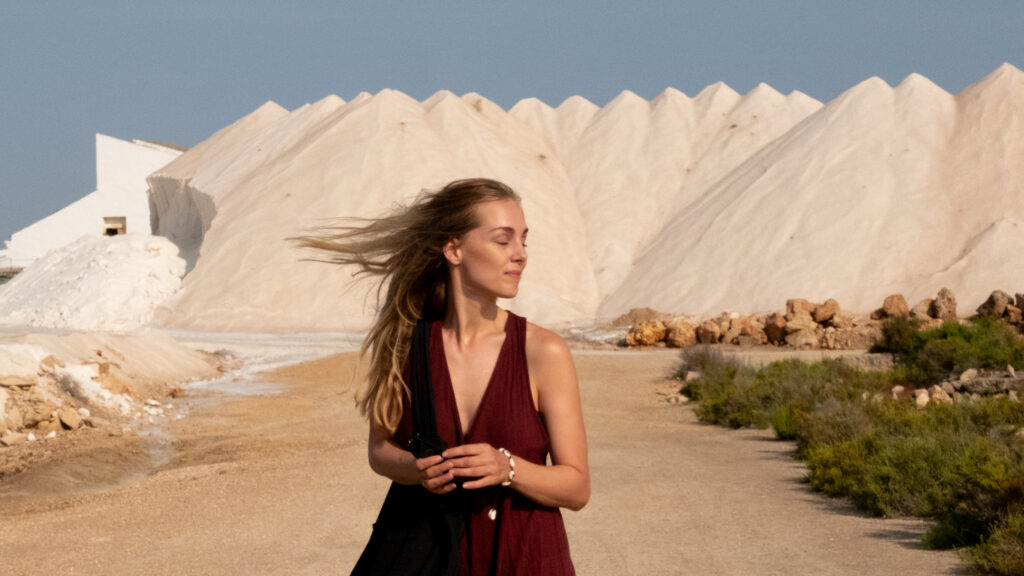
I was sitting next to my friend in her car, windows down, the warm air on our faces as the sun was going down. We were heading to her home and enjoying the drive when something made me look twice. On the side of the road, big white hills were glowing in the light. Snow, sand, salt?
The music on the radio was stuttering because of the poor signal. My friend slowed down and I pulled out my phone to check the name of the place. Flor de Sal d’Es Trenc, the map said. That night, I looked up their website and the next day we returned for a guided tour to see it all up close.
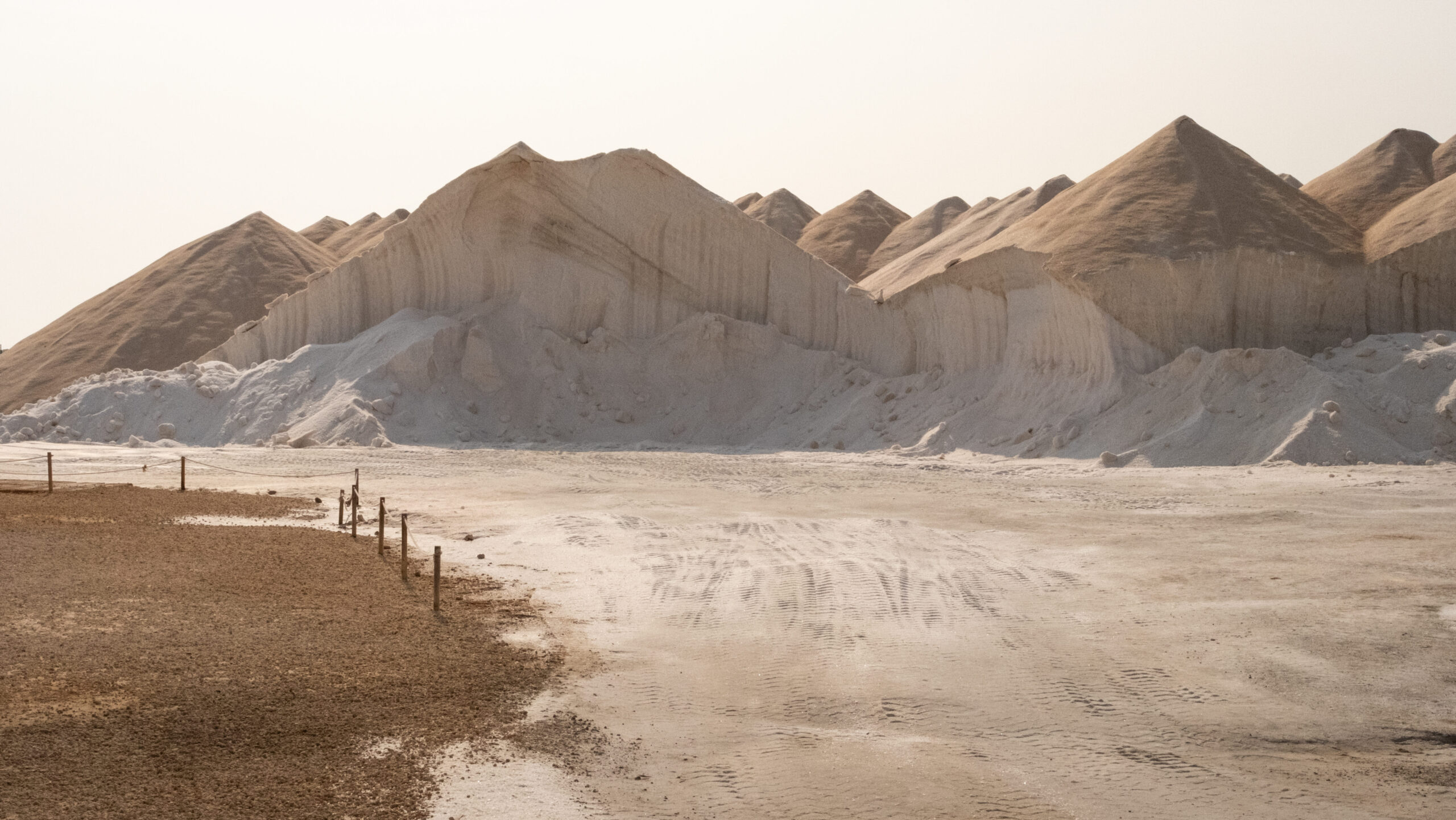
From Sea Water to Salt Flakes: How Sea Salt is Made
Mallorca’s dry and sunny climate makes it the perfect place for harvesting sea salt. A liter of seawater here contains about 35 grams of salt. As it slowly flows through a system of evaporation ponds, the concentration increases to over 300 grams per liter in the final lagoon.
The salt harvesting season runs from March to September. It begins by pumping seawater from the Es Trenc beach into more than 160 shallow ponds, known as salt pans. These have clay or wooden bottoms and allow the water to evaporate naturally under the sun.
Different types of salt are collected – some by machine and others by hand – depending on the type of pond and how the salt has crystallised.
Pink
Flamingos get their famous pink colour from the food they eat. Tiny algae called Dunaliella salina produce a red pigment, which is eaten by brine shrimp living in the salt basins. The shrimp store this pigment in their bodies and when flamingos eat the shrimp, the pigment goes to their feathers and skin, giving them their bright pink color.
The same red pigment from the algae also colours some of the salt. In the evaporation ponds, where the water is very salty, the algae multiply and release this pigment, which colours the salt crystals pink. That’s why some sea salt from this area has a natural pink shade.
If you are lucky, you might even spot some flamingos during your visit. Flamingos don’t like humans and prefer silence, but we were lucky to see two flamingos in the distance. Around 100 to 150 live in the area and more come from France during the winter months.
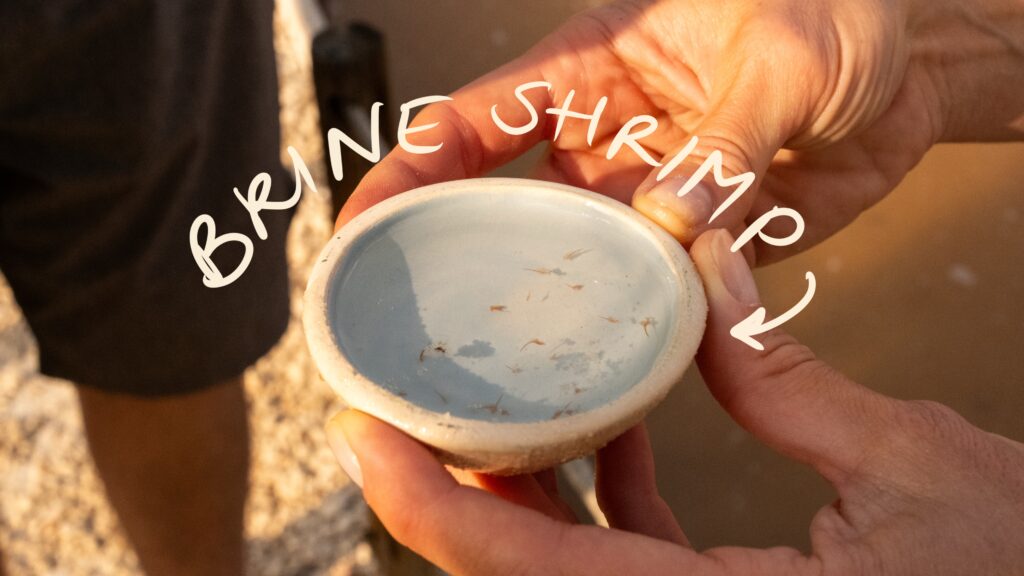
Flor de Sal: The Gourmet Salt of Mallorca
The most precious salt from this farm is called Flor de Sal. It’s a fine layer of salt crystals that forms on the surface of small wooden ponds. It’s carefully collected by hand with a tool that looks like something between a rake and a sieve.
Flor de Sal is rich in minerals and has slightly less sodium than regular table salt. It’s not used for cooking, but more for finishing dishes. You can sprinkle it on a toast, eggs or on a simple tomato salad.
After harvesting, the salt is checked by hand and either sold plain or blended with ingredients. They offer some interesting flavour combinations, like black olive, chili orange and hibiscus.
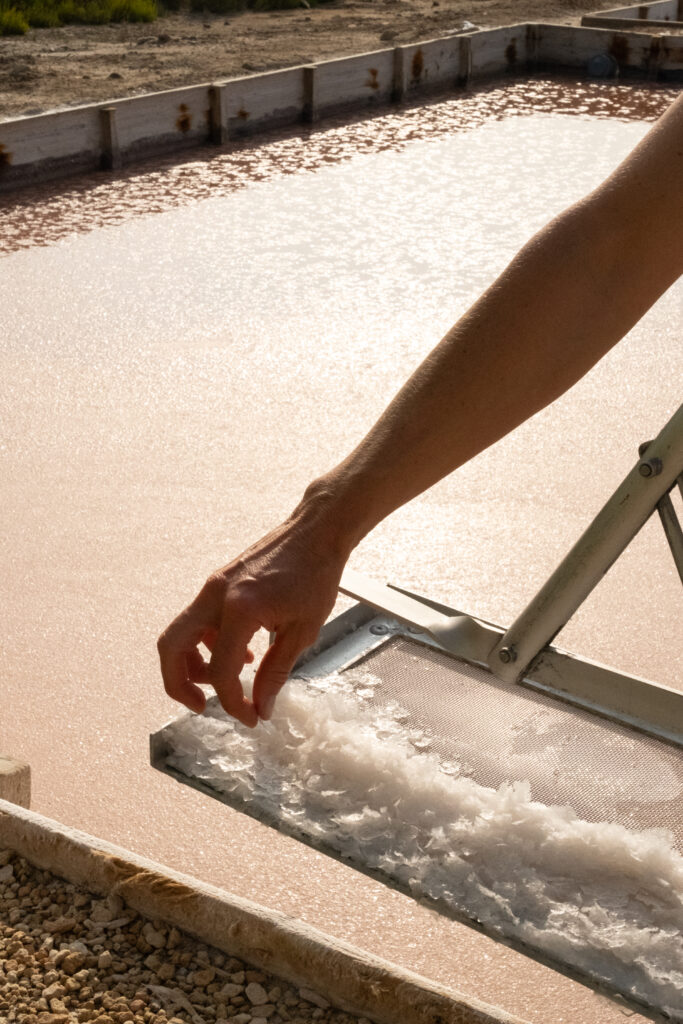
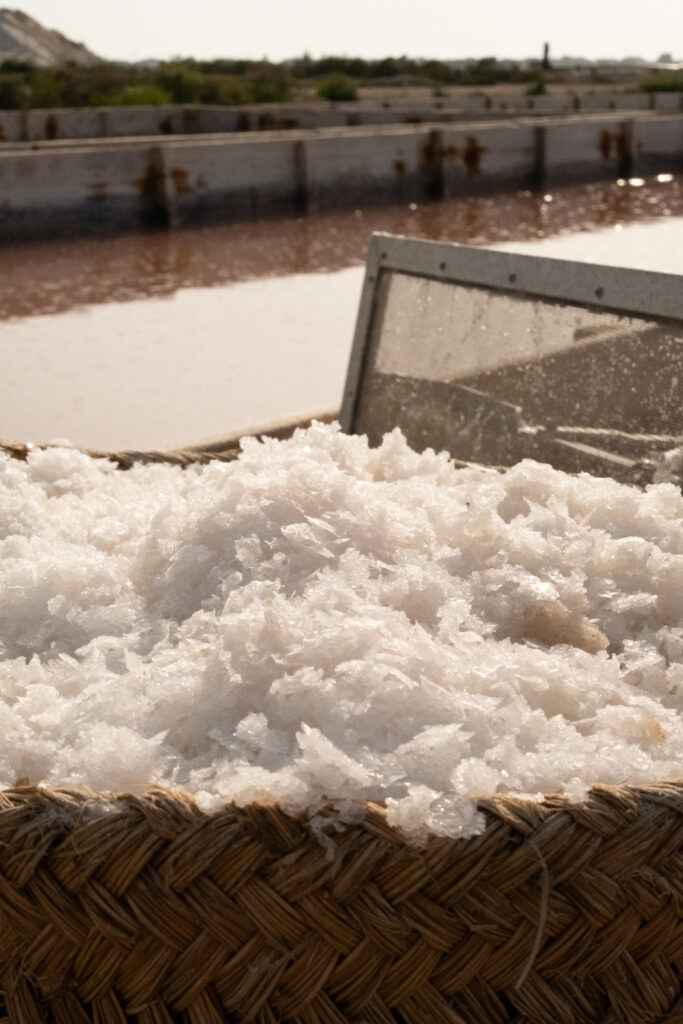

Sal Marina and Other Salt Varieties
Besides gourmet salt, the farm also produces Sal Marina, a more common cooking salt harvested with tractors from the clay bottom ponds.
They also collect larger salt chunks, often used for to feed animals or in dishwashers (pictured below in the little basket). These come from the same evaporation process, just harvested in a different way.
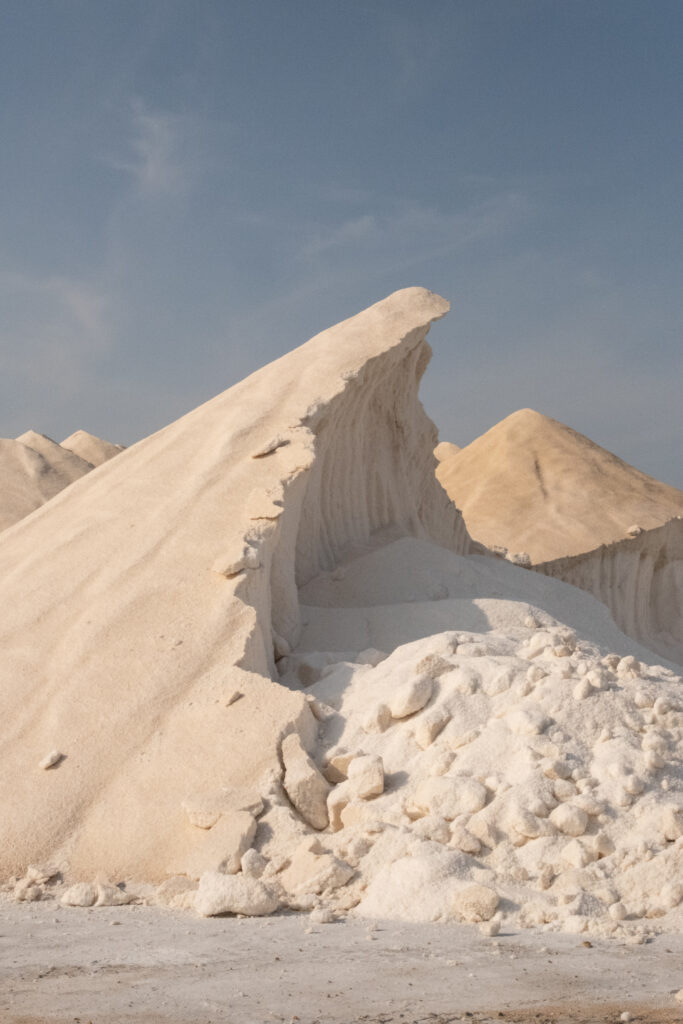
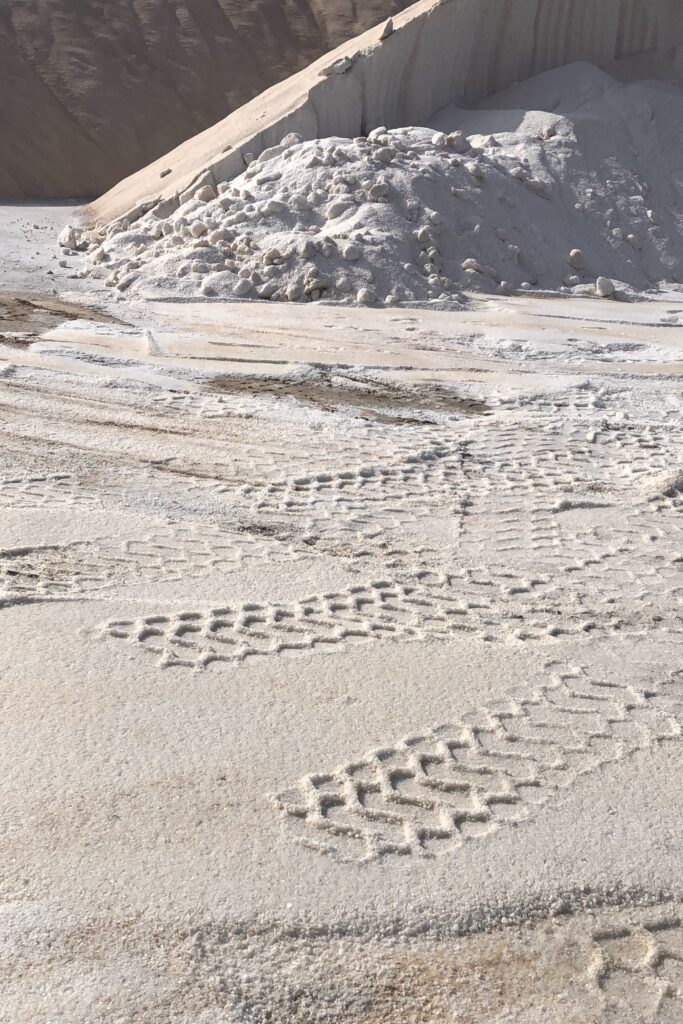
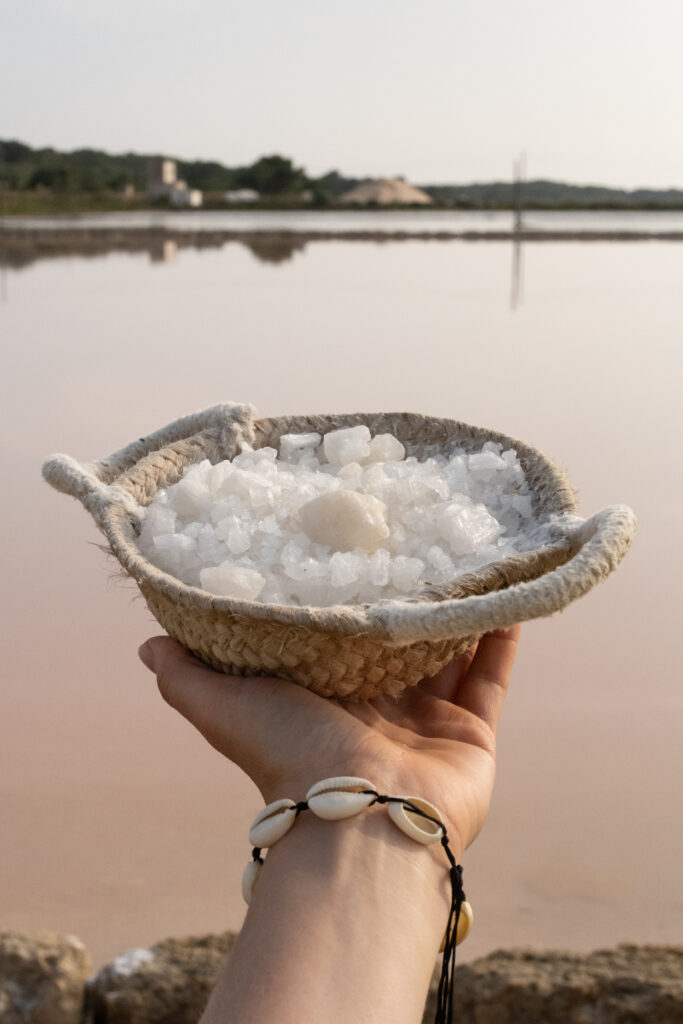
Salicornia
Near the salt lagoons grows a plant called Salicornia, which is also known as sea beans. It’s a crunchy, salty green often used in French and Mediterranean dishes.
I hadn’t tried it before, but I did during the tour and was pleasantly surprised. It’s crispy, salty and fresh. I could imagine it on grilled white fish, chopped into a coquilles dish, or even pickled like a seaweed salad.
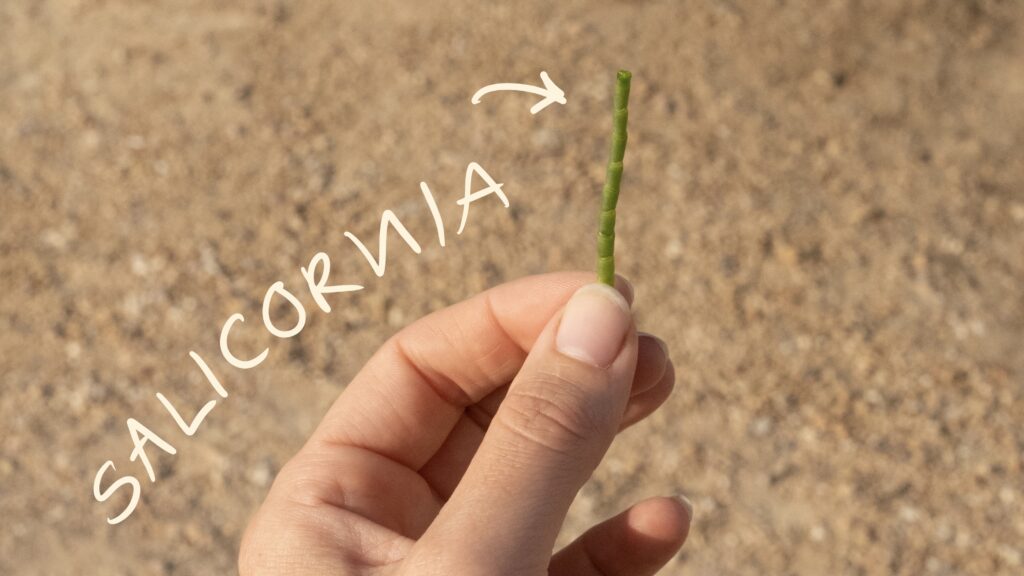
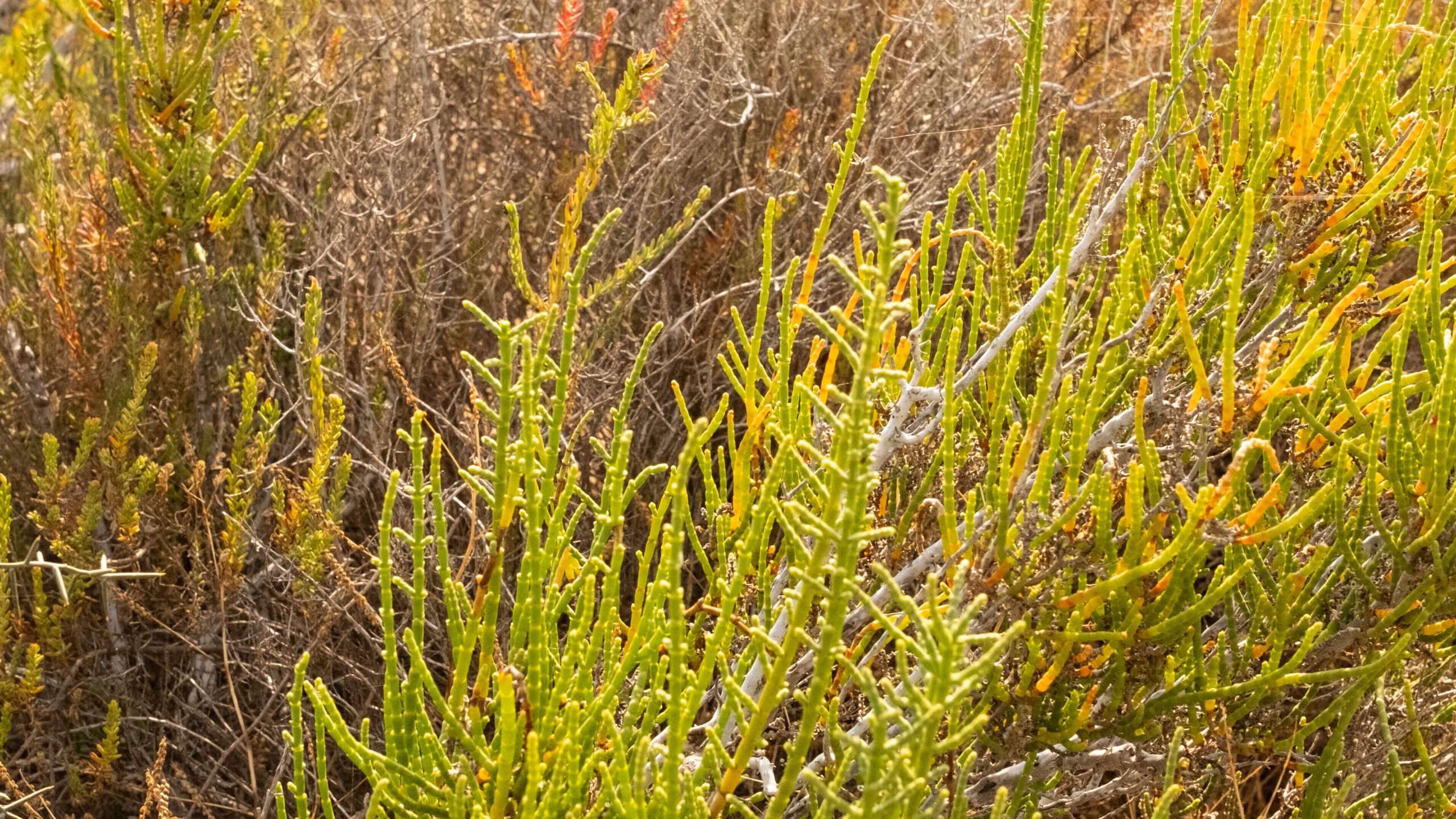
Tour
After the tour, you can taste and buy all the different salts at their shop. I brought a black olive blend – something I never tried before – and immediately imagined it on a tomato salad or on a poached egg.
I asked the tourleader for her favourite salt blend, it was the orange chili, but unfortunately sold out! Maybe next time I will be more lucky.
We picked the 6 PM (18:00) tour which was perfect for us. It was not too hot and the light before golden hour made the salt mountains look magical. The experience was beautiful and informative, though it was a bit rushed and I wish the guide gave us a bit more time to ask questions.
If you are interested in local food production or just looking for a unique experience in Mallorca, this tour is definitely worth it. It’s also a great spot for photography lovers.
The salt farm is located just outside the town of Ses Salines in southern Mallorca. You can book a tour directly through their official website and pay upon arrival.
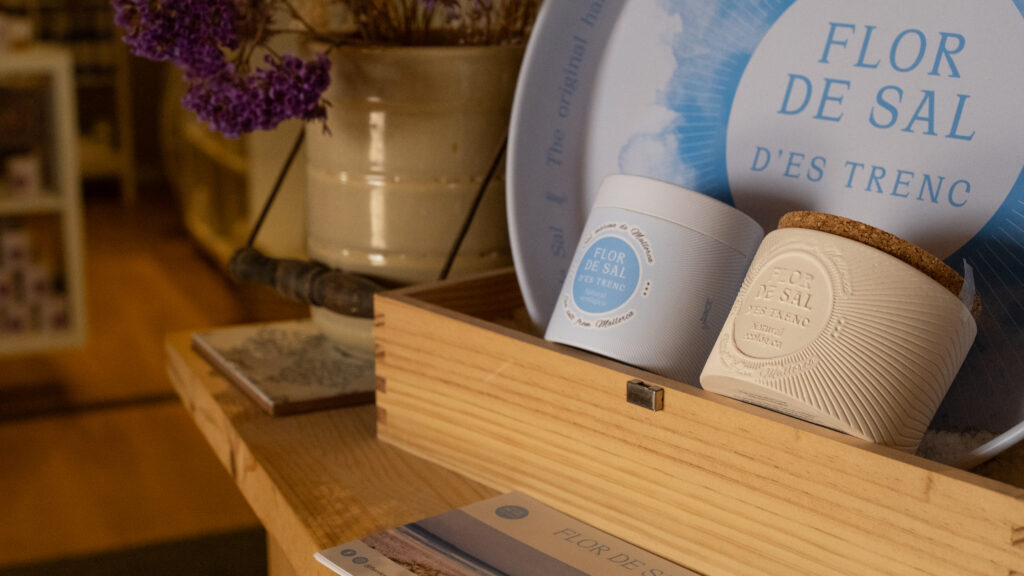
Final Thoughts
This was such a flavourful experience. Learning how salt is made from seawater, seeing the ponds, tasting gourmet blends and witnessing Mallorca’s golden light bouncing on the mountains of salt was unforgettable.
Please let me know if you have been or planning to go to Flor de Sal d’Es Trenc or if you have visited any other salt farms. I would love to visited other salt farms in the future and happy to receive your recommendations!
Until next adventure,

Practical Info
- Location: Flor de Sal d’Es Trenc, near Ses Salines, Mallorca
- Tour time: We joined the last tour at 6 PM (18:00) for temperature and light reasons. But they do 3 – 4 tours a day
- Price: €10 adults / €5 kids (8–16 years) / free under 8 years
- Shop: you can taste and buy salt after the tour in their shop
- Drone flying: not allowed

